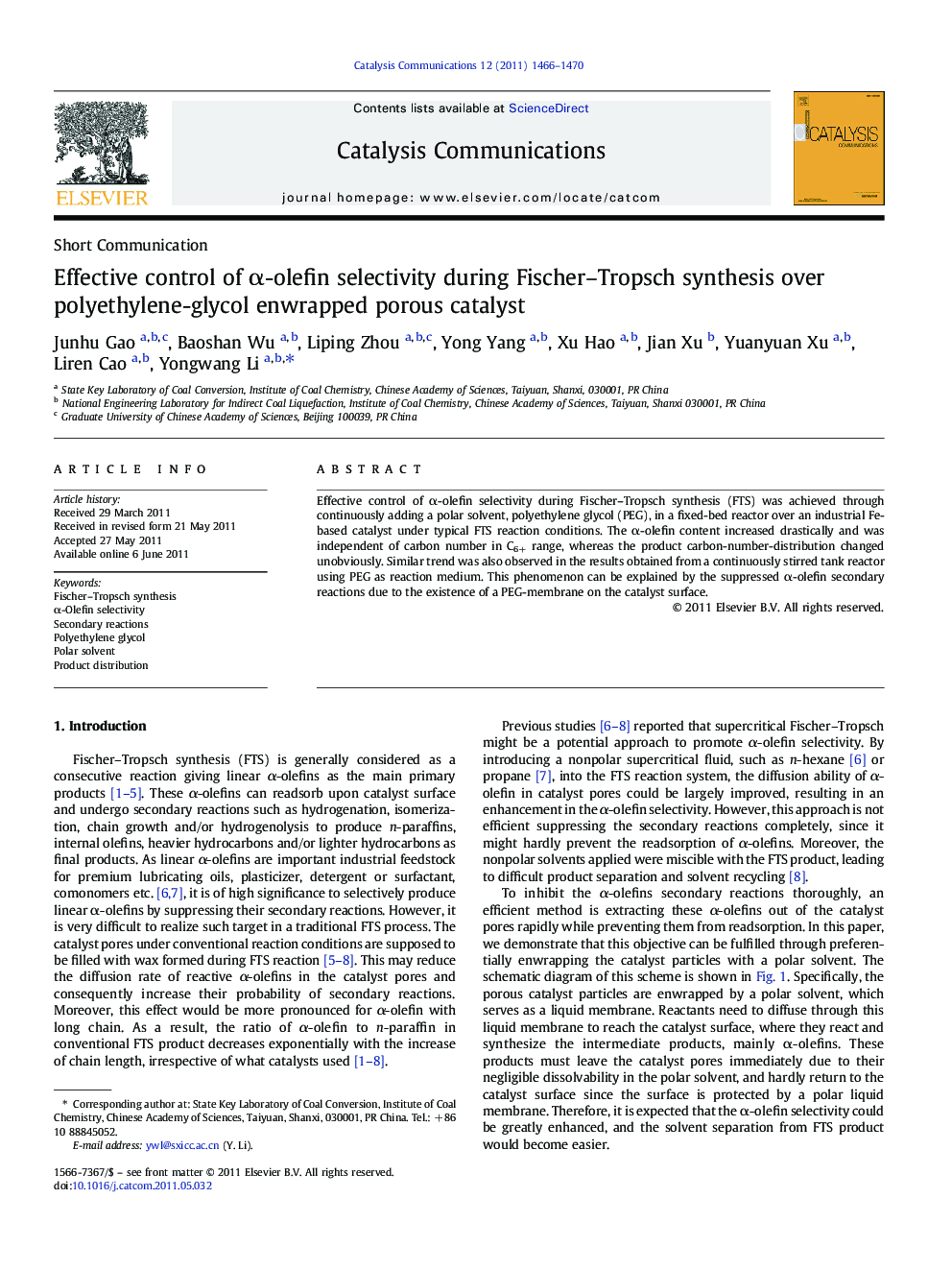| Article ID | Journal | Published Year | Pages | File Type |
|---|---|---|---|---|
| 50321 | Catalysis Communications | 2011 | 5 Pages |
Effective control of α-olefin selectivity during Fischer–Tropsch synthesis (FTS) was achieved through continuously adding a polar solvent, polyethylene glycol (PEG), in a fixed-bed reactor over an industrial Fe-based catalyst under typical FTS reaction conditions. The α-olefin content increased drastically and was independent of carbon number in C6+ range, whereas the product carbon-number-distribution changed unobviously. Similar trend was also observed in the results obtained from a continuously stirred tank reactor using PEG as reaction medium. This phenomenon can be explained by the suppressed α-olefin secondary reactions due to the existence of a PEG-membrane on the catalyst surface.
Graphical abstractEnwrapping the catalyst particle with a polar solvent, polyethylene glycol (PEG), can significantly increase the selectivity to α-olefins, especially to those with long molecule chains.Figure optionsDownload full-size imageDownload as PowerPoint slideResearch Highlights► The α-olefin selectivity increases markedly with the addition of PEG. ► The α-olefin content becomes almost independent of carbon number. ► The PEG-enwrapped catalyst can realize product separating during reaction. ► This study provides a potential route of producing higher linear α-olefins. ► It reveals the importance of controlling the catalytic environment of FTS reaction.
